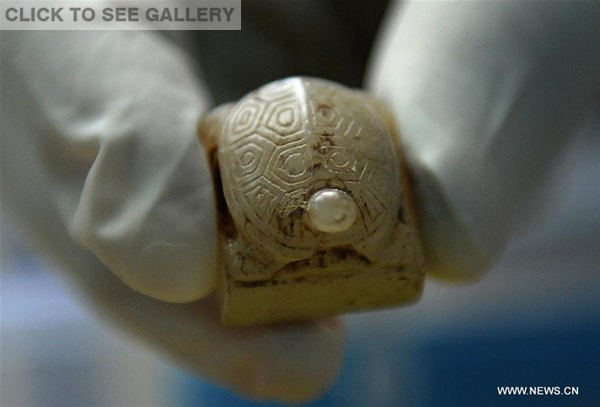More than 400 relics unearthed from a Chinese tomb will be displayed in Beijing, authorities said Monday.
The precious items from the tomb of the first "Haihunhou" (Marquis of Haihun) will be on show for three months at the Capital Museum starting from March 2, said Xu Changqing, head of the Jiangxi Cultural Relics and Archeology Research Institute.
"Some items will be displayed to the public for the first time," Xu said.
It will be the second time that the relics from the tomb are on public display. Last year, a display featuring 120 items from the tomb attracted some 180,000 visitors to the Jiangxi Provincial Museum.
The tomb, which dates back to the Western Han Dynasty (206 BC - 24 AD), was unearthed in Nanchang City, capital of east China's Jiangxi Province. It covers roughly 40,000 square meters and contains eight small tombs and a burial site for chariot horses.
The tomb is thought to belong to Liu He, grandson of Emperor Wu. Liu was given the title "Haihunhou" after he was deposed as emperor after only 27 days. Haihun is the ancient name of a very small kingdom in the north of Jiangxi.
Excavation of the site started in 2011. Artifacts unearthed so far include a portrait of Confucius, nearly 3,000 wooden tablets and bamboo slips and a large number of bronze, gold and jade items.



















































